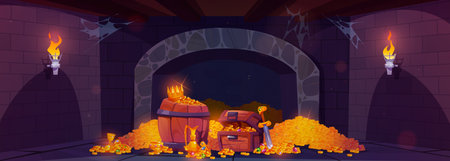The Ancient Paths and Their Whispered Legends
Across the rolling hills and mist-laden moors of the United Kingdom, countless footpaths and byways weave through the landscape, each one echoing with stories as old as the land itself. These ancient trails are more than mere routes for ramblers; they are living tapestries embroidered with centuries of myth, folklore, and local legend. As you set foot upon these winding tracks, whether through a dew-kissed Cotswold meadow or along the rugged Northumberland coast, every step stirs memories of those who have walked before—shepherds, villagers, pilgrims, and travellers—all united by their shared tradition of storytelling. It is in the quiet crunch of gravel underfoot or the distant call of a curlew that the tales begin to surface: whispered legends passed down from generation to generation, shaping not just our understanding of the land but also our connection to it. The power of these stories lies in their ability to transform a simple walk into an immersive journey through history and imagination, where every stile and holloway becomes a portal to another time.
2. Campfires, Cairns, and the Oral Tradition
In the heart of the British countryside, storytelling is woven into the very fabric of the landscape. As dusk settles over rolling moors or craggy coastlines, walkers and hikers often gather in small circles around a crackling campfire or pause by ancient cairns that have stood sentinel for centuries. These moments are more than a chance to rest weary feet—they become opportunities to share folk tales passed down through generations. The oral tradition thrives here, with each tale adding warmth to the night air, echoing across valleys and stone-strewn paths.
Campfires provide an inviting glow against the evening chill, their flickering light casting shadows that seem to dance in time with whispered legends. Cairns—those mysterious piles of stones marking trails or memorialising travellers past—are natural gathering points where walkers trade stories about witches’ curses, lost kings, or spectral hounds said to roam the hills. Such tales are not mere entertainment; they transform a simple ramble into a journey rich with history and imagination.
The Rituals of Storytelling Along UK Trails
| Setting | Storytelling Practice |
|---|---|
| Campfire Gathering | Sharing ghost stories, local legends, and personal adventures as darkness falls |
| Cairn Pause | Recalling myths linked to landmarks or passing on cautionary tales for fellow walkers |
| Bothy Rest Stop | Swapping yarns with strangers-turned-friends while sheltering from rain or wind |
This tradition is deeply rooted in British culture, where every step along a trail may reveal a hidden narrative. Whether it’s the haunting tale of Black Shuck on Norfolk’s coastal paths or legends of faeries in Scotland’s glens, storytelling fosters connection—not only between people but also with the land itself. By engaging in these rituals, modern-day walkers keep alive an ancient practice, ensuring that every journey is laced with magic, meaning, and shared memory.

3. Ghostly Encounters on Misty Moors
Step onto the rolling moorlands as dawn breaks and the world is cloaked in a silvery mist, and you enter a realm where the veil between past and present seems gossamer thin. British walkers, with boots muddied by peat and hearts open to wonder, have long woven tales of ghostly apparitions drifting across these haunting landscapes. The North York Moors, Dartmoor, and the wilds of the Scottish Highlands are not just places for rambling—they are living storybooks echoing with local lore.
On these lonely paths, it’s said that spectral figures emerge from the haze: the White Lady gliding silently over boggy ground, or shadowy horsemen galloping at dusk, their hooves muffled by heather. Walkers swap stories of sudden chills and fleeting glimpses at the edge of vision—a sense that they are never truly alone. Each encounter is embroidered into the fabric of walking culture, retold around bothies or by campfires as night falls.
But it isn’t only phantoms who inhabit these moors. Mischievous fairies—known in Cornish folklore as ‘Piskies’—are believed to lead travellers astray, enticing them off well-worn tracks with laughter that echoes like skylarks in the fog. Legends speak of changeling children and mysterious lights dancing atop tors, urging wanderers to tread carefully and respect ancient boundaries. These stories remind every walker that nature holds secrets not easily revealed in daylight.
Then there are the beasts: shaggy hounds with eyes like burning coals, such as Devon’s infamous Black Shuck or Scotland’s Cu Sith, whose chilling howls freeze even seasoned hikers in their tracks. Their legends serve both as cautionary tales and invitations to embrace the thrill of uncertainty—the sense that adventure lies just beyond each bend in the path.
Such folk tales are more than mere diversions; they shape our relationship with the land itself. To walk here is to step into centuries-old narratives passed from one generation of ramblers to the next. Every whispering wind, every shifting shadow becomes part of a shared heritage—a testament to how storytelling breathes life into Britain’s wild spaces and binds all who wander them.
4. Local Characters: Keepers of Lore
Wandering the winding footpaths of the UK, you soon realise that the landscape is only half the story—the other half lives in the hearts and voices of those who call these places home. Every village, every windswept moor, has its own cast of colourful locals who serve as living libraries of local lore. From shepherds tending their flocks on misty hillsides to pub landlords who pour more than just pints, these individuals are the silent stewards of tradition, gently weaving tales into the fabric of everyday life.
Shepherds, with faces weathered by sun and storm, might greet a passing walker with a nod and a story about phantom dogs or lights that dance across the dales at midnight. Theirs is an ancient knowledge—tales handed down through generations, shaped by the rhythms of lambing season and shifting seasons. Pub landlords become impromptu storytellers after dusk, as fires crackle and walkers gather for respite. Over a pint of local ale, they share yarns about smugglers’ tunnels beneath sleepy villages or spectral coaches rattling along forgotten lanes.
The Storytellers You’ll Meet Along the Trail
| Character | Where to Find Them | Stories They Tell |
|---|---|---|
| Shepherds | Hillsides, remote farms | Folklore about animals, nature spirits, lost travellers |
| Pub Landlords | Village pubs | Local legends, ghost stories, historic happenings |
| Seasoned Hikers | Popular trails and waypoints | Tales of past adventures, near-mythical wildlife encounters |
Even seasoned hikers, boots muddied from countless journeys, become part of this tapestry. They recount hair-raising moments when fog swallowed the path or share advice whispered by old-timers about avoiding certain woods after dark. These stories flow freely between strangers on the trail—each retelling preserving a little more of the countryside’s intangible heritage.
This oral tradition is not just entertainment; it is a living bond between people and place. As these keepers of lore pass on their tales to newcomers, they ensure that each walk is more than just a journey through nature—it becomes a step into the age-old narrative that shapes Britain’s wild heart.
5. Passing Stories Along the Pennine Way
Follow the threads of narrative as they weave their way through the rugged heart of England, along the famous Pennine Way. Here, stories are not simply told—they are handed down like treasured heirlooms from one pair of muddy boots to the next. Each step along this storied trail echoes with the voices of those who have walked before, sharing tales shaped by moorland winds and shrouded in morning mist.
The Pennine Way is more than a path; it is a living storybook written upon the land itself. As walkers traverse its undulating hills and shadowed valleys, local legends spring to life. Perhaps it’s the whispered account of a ghostly shepherd glimpsed near Kinder Scout, or an old tale of star-crossed lovers at Malham Cove. These folk stories are passed from hiker to hiker around flickering campfires or over steaming mugs of tea in cosy village pubs, each retelling adding a layer of memory and wonder.
For many, these narratives become as much a part of the journey as the lichen-streaked stones underfoot or the wild heather that brushes against their legs. The landscape acts as both stage and storyteller, inviting each traveller to listen closely—to truly see and feel the stories tucked into every crag and hollow. In this way, the Pennine Way becomes a tapestry of shared experience, where history, myth, and personal adventure blend seamlessly together.
6. A Living Tradition: Storytelling in the Modern Age
As sunlight fades over the rolling hills and mist gathers along ancient hedgerows, modern walkers find themselves part of an unbroken chain, weaving their own voices into the rich tapestry of British folklore. Today, the tradition of storytelling on the trail lives on—not just through spoken word around a crackling fire or at a cosy pub, but also through the many tools of our digital age. Mobile phones become repositories for tales, with hikers capturing snippets of legend in voice memos or sharing eerie encounters on social media, reaching fellow ramblers miles away. Journals, both paper-bound and virtual, are filled with sketches of moss-draped trees and hurried notes about phantom hounds seen in twilight. These records mingle personal reflection with echoes of age-old stories, allowing each walker to become both chronicler and creator.
Local walking groups and annual festivals provide gathering grounds for these shared narratives. Here, old-timers recount tales passed down by grandparents while younger adventurers add their own twists—perhaps blending the legend of a spectral knight with a recent encounter beneath an ancient yew. Community walks often feature story stops, where participants pause to listen to lore spun out against the backdrop of ruined abbeys or windswept tors. In these moments, tradition breathes anew as listeners are transported not only by the physical journey but by the collective imagination of those present.
This blending of old voices and new perspectives is uniquely British: rooted in respect for history yet ever-adapting to embrace change. The wild moors and green lanes that inspired centuries of folk tales now echo with laughter and digital pings—a living testament to how technology and community spirit keep legends alive. Whether it’s through a hastily typed blog post after a muddy walk or a late-night WhatsApp message about strange lights on the fells, today’s walkers continue to nurture this storytelling tradition. In doing so, they ensure that every footstep adds another thread to the vibrant patchwork of Britain’s narrative landscape—a landscape where past and present intertwine beneath the boundless sky.

